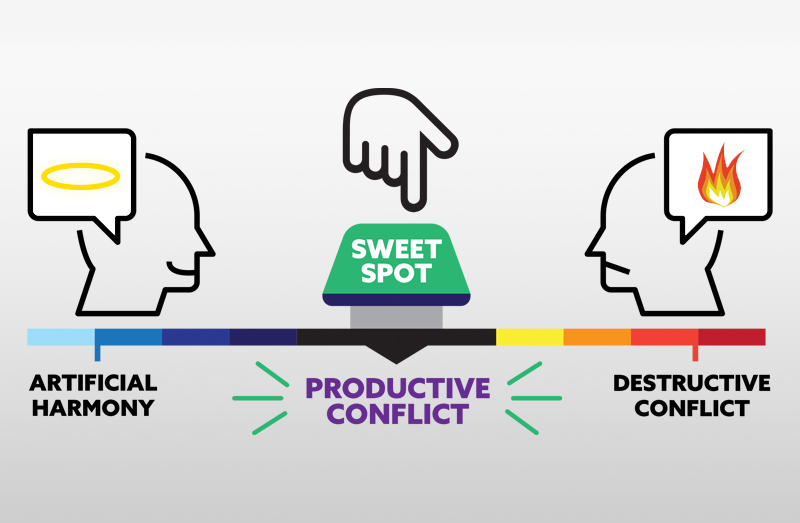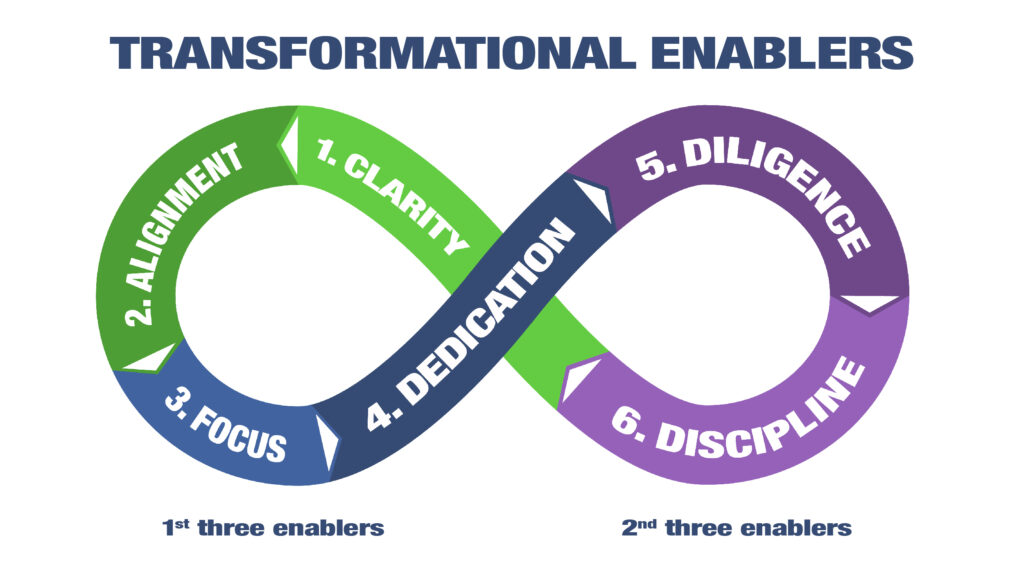The #1 Execution Habit for Scaling Up Helps You Practice Productive Conflict.
When I first met an executive leadership team of a decade’s old successful family business, my first question was this: “What do you cherish about your work?” Out of the 11 leaders, almost everyone said, “our people, our culture.” Literally, everyone elaborated on how much it meant for them to be a part of a family business that provided for over 400 employees and positively impacted the world. But it was the second question that revealed a stark reality about their culture’s behavior and their leadership team…
The Second Question: The Real Challenge
The next question I asked was this: “What is the real challenge for this leadership team?” The first volunteer spoke up and said, “I am hesitant to share this, but we often don’t trust each other enough to risk being completely candid. We are “Hoosier friendly.”
That broke the ice! Several leaders expressed similar concerns that conflict – sharing opposing opinions with strong emotions – was often avoided for the sake of keeping harmony. Referencing the work of Patrick Lencioni from his seminal book, The Five Dysfunctions of a Team, I reminded the team that what they were acknowledging, this absence of trust, goes hand-in-hand with a fear of conflict. In response, that first (brave and candid) volunteer acknowledged the need for conflict solutions: “Yes, that is what we need to work on.”
A Hallmark Trait of Great Teams
Patrick also wrote this: “Great teams do not hold back with one another. They are unafraid to air their dirty laundry. They admit their mistakes, their weaknesses, and their concerns without fear of reprisal.” Unfortunately, this level of communication and trust is a challenge for too many organizations and leadership teams trying to tackle unproductive conflict.
In my work as an executive team coach, I am convinced that the bottleneck restricting incredible ongoing success with fabulous business growth is the executive leadership team’s inability to build vulnerability-based trust, and then, to practice productive conflict!
That is why it is essential for successful teams to work on conflict management and embrace the #1 execution habit for scaling up:
The executive team is healthy and aligned.
Unpacking healthy and aligned.
What does it mean for an executive team to be healthy? It is healthy for leadership teams to know each other’s styles. It is likely a healthy leadership team has completed a profile to determine the DiSC Style, as well as findings from Enneagram, Predictive Index, and/or Myers Briggs assessments to help everyone understand themselves and each other better.
What’s more, the Productive Conflict Profile Assessment is a particularly “healthy” resource because it helps each teammate understand how they show up during conflict, including destructive patterns that arise from automatic thoughts, biases, and judgments.
Beyond being a healthy team, what other trait is essential to deploying effective leadership skills and successful scaling up? Being aligned!
Daniel Goleman said this: “Keeping the focus on strategic goals prevents a conflict from shifting to damaging attacks on the individual.” Thus, it is a critical conflict management habit for the leadership team to craft a shared vision, and reference that shared vision for more productive conflict. And yes, productive conflict may include passionate debate!
The Bottom Line:
To build cultures that work, here are three essential takeaways to help your team execute productive conflict:
- Be collegial by making it safe to be open and candid.
- Stop being too congenial, so “Hoosier friendly” that you avoid uncomfortable conversations.
- Start the habit of being healthy and aligned to do what it takes to achieve a shared vision
Remember what Alden Mill, U.S. Navy Seals, Retired, said: “Conflict is an absolutely critical piece for you to demonstrate you care for your team.”
Watch this brief video for more perspectives about Productive Conflict:
Ready to begin your journey toward healthy and aligned collaborative leadership? Take just a few worthwhile minutes to complete the Scaling Up Assessment. The Assessment will help you understand where you are regarding the 4 decisions you must get right when scaling up.
A good place to begin your quest to freedom and effective leadership skills is to take the Scaling Up Assessment.
Take 4 minutes to complete the Scaling Up Assessment to know where you stand concerning the 4 decisions you have to get right when scaling up.











